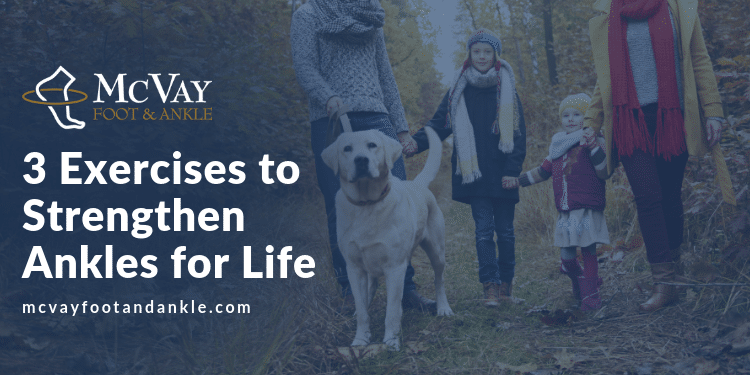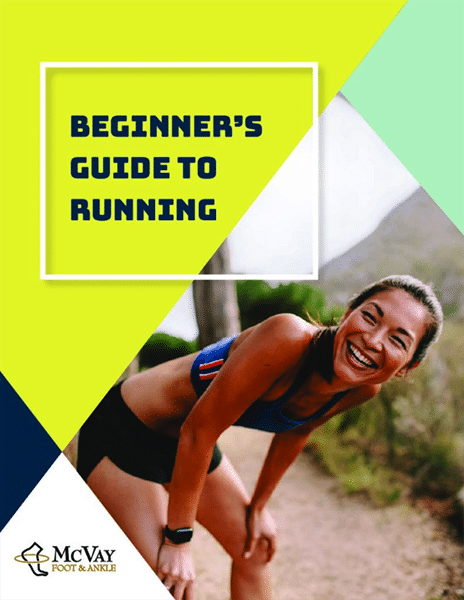3 Exercises to Strengthen Ankles for Life
There is so much to get out and enjoy in Colorado Springs and the surrounding areas and taking care of your ankles is a big step toward getting the most out of it!
We recently discussed some great local locations for fall walking, but they are not lacking for splendor and fun in other seasons, either. Then there’s sports, of course—from pickup games of basketball to a night bowling with old friends. And don’t forget any of our fine festivals to peruse!
From big events to daily life, having stable ankles is a blessing. It’s very easy to take for granted, too, until we start to feel that stability decline.
It often happens with a severe sprain or other ankle injury that doesn’t properly heal. This leaves the structure of the ankle weakened and more likely to “give out” at certain times. This, in turn, increases the risk of injuring your ankle again, and the spiral can continue downward from there.
Having ankle instability—or even the fear of ankle instability—can be a significant barrier against getting out and enjoying the things you like in life. The good news is that the better you maintain ankle strength now (even if you have suffered injuries in the past), the better you can maintain stability and strength into the future.
You don’t have to enter a fitness boot camp for ankles to start reaping benefits. There are quick exercises you can start incorporating into any routines you already have, or just create a small, focused session sometime during the day.

Important Note
The exercises we’ll describe below all focus on general ankle strength, but they might not be the best exercises for you specifically to try. We know you see this often in exercise articles, but it rings true: consult with a professional before trying any new exercise routines.
We can help you determine the best way to approach your long-term ankle stability goals and address problems that might get in the way. This is especially necessary if you have suffered ankle injuries in the past or currently have ankle instability.
Fixed Object Resistance
This simple exercise needs nothing but an object that will stay in place when you push against it. This can be a sofa, a wall, a bottom step, or even a tree if you’re outside.
- With your ankle flexing down and toward the inside (a “pigeon-toed” look), hold against the object for a count of 10, then relax. Repeat this 10 times.
- Shift your ankle upward (toes and forefoot off the ground) and away from your body. Hold this position against the object for 10 counts of 10 as well.
- Push your ankle directly down against the object for 10 counts of 10.
- Push your ankle directly up against the object for 10 counts of 10.
Ankle Circles
This exercise is performed seated, which makes it a good one for performing at your work desk or while watching TV.
- While sitting, extend one leg out in front of you, knee as straight as you can make it.
- Move your foot clockwise up to 20 times (or until you are fatigued).
- Rest your leg for 5 seconds, then lift it back into the straight position and rotate counterclockwise up to 20 times.
- Switch legs and repeat. Perform up to four sets per side.
This is a good move for ankle strength as well as joint stability and range of motion. You can also switch it up in various ways, including using your ankle to shift your foot up and down or side to side (like waving hello with your foot).
Another variation includes holding your foot out in front of you in the same manner as before, but treating your big toe as a pen and writing the alphabet out in the air in front of you. Make the muscles work in ways they are not normally used to doing and your ankle will benefit.

Balance Training
Our bodies work hard to maintain our balance, and our ankles equally so. When we sense we are on an uneven surface or about to fall, our nervous system triggers muscles to fire in ways to hold us stable.
Balance work does a lot more than just strengthen our ankles. It also trains our bodies to be more aware of the positions of our bodies (proprioception). This helps us react to imbalance more quickly and effectively, further reducing injury risks.
No equipment needed for this exercise, either—but don’t be afraid to perform it next to a wall, counter, or other immovable object if you want some extra stability or need a place to catch yourself.
- Stand on one leg for 30 seconds, then switch to the other leg. As you gain strength and confidence, extend your time on each leg up to 1 minute.
- Stand on one leg with the opposite leg lifted out some in front of you. Perform a half-squat up to 10 times, switch legs, and repeat.
Once these exercises feel easy, you can increase the challenge by introducing an uneven surface. Standing on a pillow or couch cushion can be an effective start, but there are wobble boards and half-spheres designed for this work, too.
A Healthy Balance
Taking steps toward ankle health now is a great way to reward your future self. However, there may be cases when exercise isn’t quite enough, or an accident happens anyway.
In those cases, McVay Foot & Ankle will be here to help you face foot and ankle challenges and live life to its fullest.
Our office in Colorado Springs is happy to hear from patients old and new. Call us at (719) 266-5000 to schedule an appointment.
Get Our Running Guide Today!
In our guide, you’ll learn more about:
- The benefits of a well-planned running routine
- When you should see a doctor if you have concerns or an injury
- How fast you should progress
- The best shoes to get for your feet
- The best food for recovery
Inside, you’ll also receive a running calendar that can help you get started for a 5K run!
© McVay Foot & Ankle. All Rights Reserved
Web Design by CP Solutions
Marketed by VMD Services
Privacy Policy | Terms & Conditions

